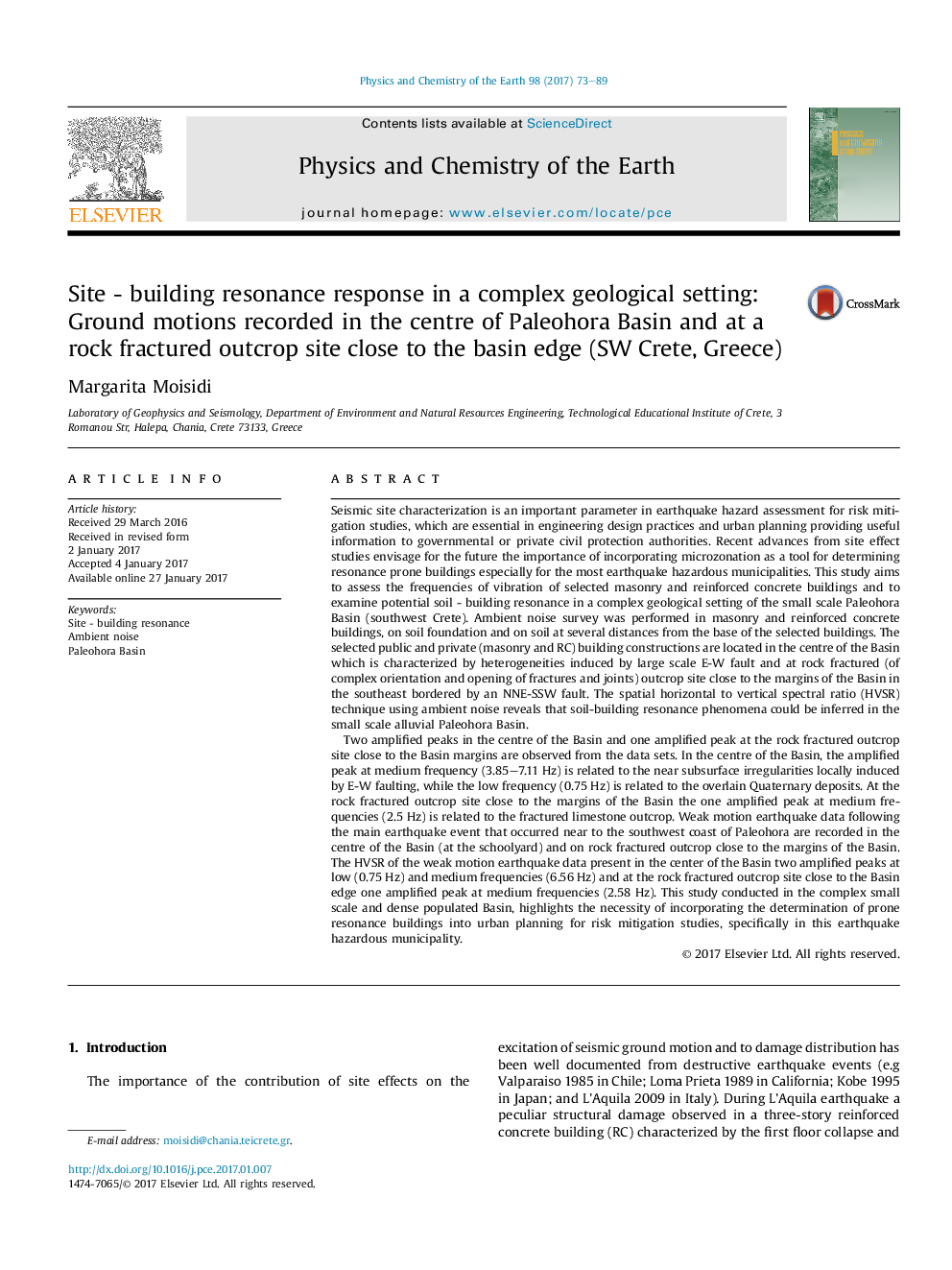| Article ID | Journal | Published Year | Pages | File Type |
|---|---|---|---|---|
| 5784611 | Physics and Chemistry of the Earth, Parts A/B/C | 2017 | 17 Pages |
Abstract
Two amplified peaks in the centre of the Basin and one amplified peak at the rock fractured outcrop site close to the Basin margins are observed from the data sets. In the centre of the Basin, the amplified peak at medium frequency (3.85-7.11Â Hz) is related to the near subsurface irregularities locally induced by E-W faulting, while the low frequency (0.75Â Hz) is related to the overlain Quaternary deposits. At the rock fractured outcrop site close to the margins of the Basin the one amplified peak at medium frequencies (2.5Â Hz) is related to the fractured limestone outcrop. Weak motion earthquake data following the main earthquake event that occurred near to the southwest coast of Paleohora are recorded in the centre of the Basin (at the schoolyard) and on rock fractured outcrop close to the margins of the Basin. The HVSR of the weak motion earthquake data present in the center of the Basin two amplified peaks at low (0.75Â Hz) and medium frequencies (6.56Â Hz) and at the rock fractured outcrop site close to the Basin edge one amplified peak at medium frequencies (2.58Â Hz). This study conducted in the complex small scale and dense populated Basin, highlights the necessity of incorporating the determination of prone resonance buildings into urban planning for risk mitigation studies, specifically in this earthquake hazardous municipality.
Keywords
Related Topics
Physical Sciences and Engineering
Earth and Planetary Sciences
Geochemistry and Petrology
Authors
Margarita Moisidi,
